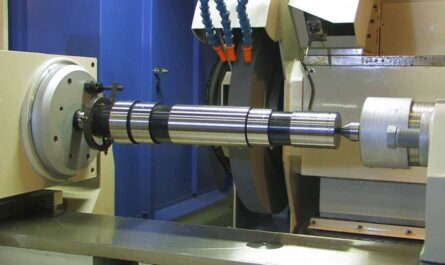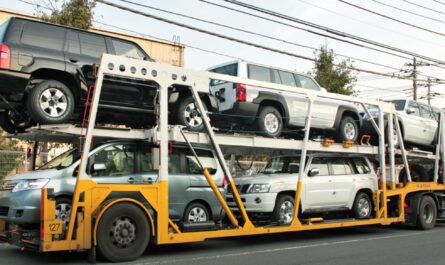De-icing is a critical process performed prior to takeoff during winter months to remove all ice, snow or frost accumulation from the aircraft surfaces. Done correctly, de-icing ensures aircraft are able to takeoff and maneuver safely even in harsh winter weather conditions.
The De-icing Process
De-icing involves spraying specialized heated de-icing fluids onto the wings, fuselage, engine intakes and other critical aircraft surfaces just before takeoff. These fluids melt any accumulated ice, snow or frost and also leave behind a protective residue that prevents re-freezing for a specified period of time known as the holdover time.
Airlines have strict de-icing procedures and checklists that must be followed for every affected aircraft prior to takeoff during winter operations. De-icing technicians will first inspect the aircraft to identify all contaminated areas. They will then spray the appropriate de-icing fluid using specialized trucks equipped with high pressure spray systems. The fluids are generally a water/glycol mixture heated to around 80 degrees Fahrenheit to ensure they effectively melt all accumulated ice.
Once spraying is complete, the aircraft must be inspected again to confirm all ice has been removed and the fluid has been applied correctly to all critical surfaces. Additionally, the holdover time for the specific fluid/temperature/contamination conditions is calculated and noted to ensure takeoff occurs before the protective residue wears off and re-freezing could occur. These post-deicing checks are crucial to verify the process was done properly.
Importance of De-icing
The importance of effective Aircraft De-Icing cannot be overstated. Even a thin layer of ice can drastically alter the aerodynamics of a plane and cause dangerous handling issues during takeoff or flight. Ice buildup on the wings reduces their lifting capabilities and changes the aircraft’s overall weight and balance distributions. Propellers and engine intakes can also stall if blocked by ice.
A key concern is ice shedding off aircraft surfaces after takeoff. Chunks of ice detaching at rotational speeds could seriously damage engines, pits or other structures. Ice leaving wing or tail surfaces can disrupt airflow profiles needed for stability and control. This shedding can occur even if the ice was properly removed by de-icing if the protective fluid film wears off before climbout.
Proper Holdover Times
Ensuring takeoff occurs before fluid holdover times expire is essential to de-icing effectiveness. Holdover periods can range from as little as 5 minutes in severe conditions up to over an hour with light icing and warmer temperatures. Airlines must account for all time elapsed between de-icing and takeoff for tasks like pushback, taxiing and takeoff clearance to prevent holdover expiration.
Weather forecasts are also crucial to monitor deteriorating precipitation or temperature drops that may require re-treatment. Some airports install heated runways or taxiways to help extend holdover times in harsh conditions but supplemental re-spray may still be needed with rapid icing rate changes. Improper holdover management has contributed to some past icing-related accidents.
Regulatory Standards
Stringent regulations are in place worldwide governing air carrier ground de-icing programs and procedures. In the U.S., the Federal Aviation Administration (FAA) issues Advisory Circulars with detailed requirements for de-icing equipment, qualified technicians, record keeping, fluid specifications, holdover times and pilot/crew responsibilities. Similar rules exist under European Aviation Safety Agency (EASA) and Transport Canada among others.
Carriers must have a formal winter operations plan addressing all aspects of their de-icing model which is audited regularly. Technician training programs are rigorous, and qualifications plus recurrent certifications are mandatory. Fluid manufacturers also test and certify their products’ performance under a variety of conditions to establish holdover times airlines must adhere to. These global standards work to maintain a high level of safety.
Continued Advancements
Aircraft de-icing remains an active area for ongoing improvement and innovation. New fluid additives and application methods seek to extend holdover times to handle more extreme weather. Technologies like infrared cameras can locate small ice patches needing re-treatment. Aircraft are incorporating new anti-icing features like special hydrophobic and superhydrophobic coatings tested to delay or prevent ice buildup. Robotic de-icing machines are in development to enhance efficiency and reduce human factor risks. Usage of computer models and drones can help characterize icing rate changes for holdover time extension assessments.
Despite harsh winter weather challenges, modern de-icing programs and procedures have greatly enhanced aviation safety in cold weather operations. By strictly following regulations and implementing the latest methods, airlines can routinely clear ice from aircraft prior to takeoff with confidence, even in extreme icing conditions. Passengers can trust their flights will depart winter destinations safely thanks to the diligent efforts of de-icing technicians on the ground. Continued regulation and innovation will keep improving this critical safety function for years to come.
Note:
1. Source: Coherent Market Insights, Public sources, Desk research
2. We have leveraged AI tools to mine information and compile it




